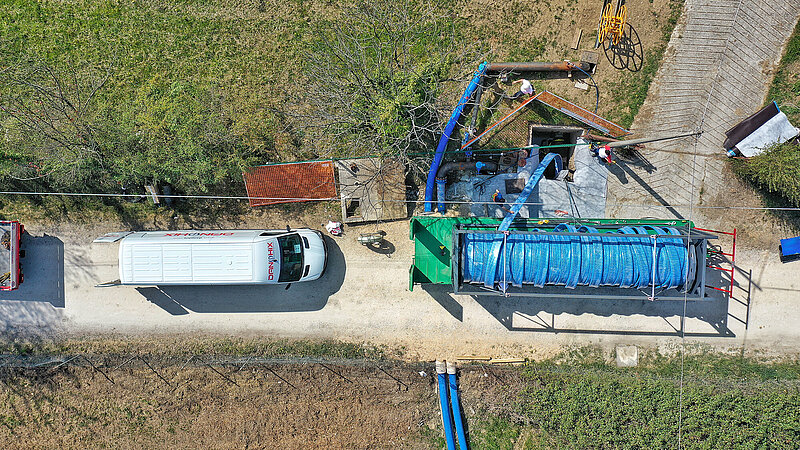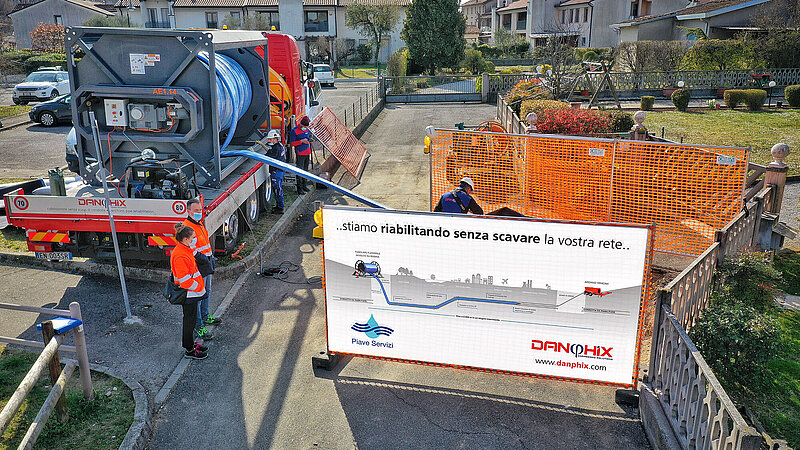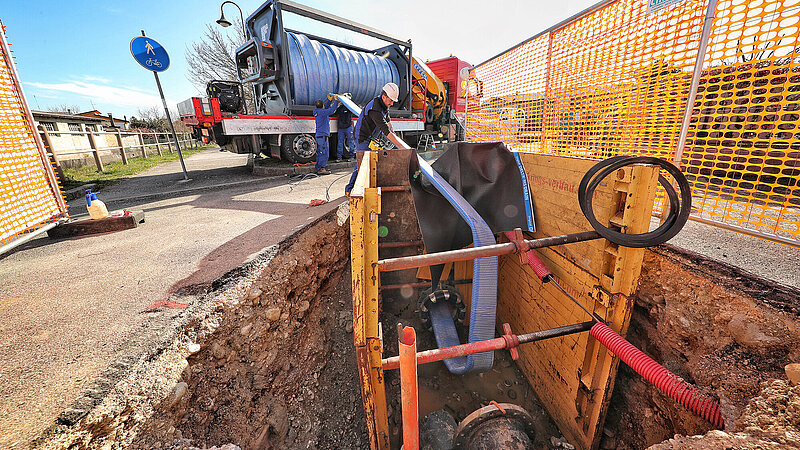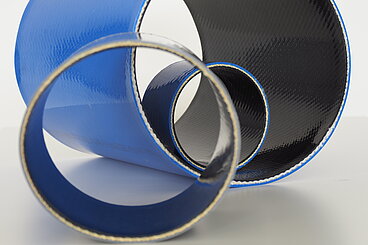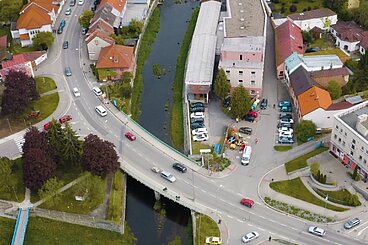The pipeline in question had to be repaired frequently because of leaks both in the steel pipes (due to corrosion of the material) and at the joints of the asbestos cement pipes (age-related leaks at the joints).
„Asbestos cement pipes are today a source of leakage, a risk to operators and hazardous waste if not intelligently utilised, due to the age of the pipes.
Replacing them involves a significant financial, technical and general resource outlay that is not easy to manage. The work described is an example of a quick and economic measure to extend the life of asbestos cement pipes.“Carlo Pesce, General Director of Piave Servizi
The route crosses the historic centre of Conegliano and then continues into the open countryside, in an area with numerous vineyards where the grapes for the production of Prosecco grow. Using the trenchless technology Primus Line®, the environmental impact and inconvenience to citizens and economic activity has been kept almost zero. Other advantages associated with the technology are lower costs and faster execution compared to a traditional installation or replacement by open excavation.
Construction of a Bypass with Primus Line®
This was a major operation, both in terms of the size of the section of main affected and the preparatory work required for the rehabilitation work. The work began with the construction of a bypass, which was necessary to take the section out of service to allow the work to be carried out while at the same time guaranteeing the water supply to consumers. "It was a particularly challenging phase because the preparation of the bypass required very detailed hydraulic planning, as flow rates and pressures had to be ensured that corresponded to the operating pressure of 200 litres/second and 8 bar, respectively, so as not to disrupt the operation of the entire water system," explains Arnold Cekodhima, CEO of Danphix.
The optimal solution was to lay two liners in parallel, each stretching over five kilometres and with a diameter of 300 millimetres, with a flow rate of 100 l/s and a pressure of 8 bar. "So, in practice, we laid a total of 10 kilometres of pipelines, creating a temporary above-ground aqueduct that perfectly mimics the operation of the underground aqueduct," explains Cekodhima.
In urban areas in particular, the pipes were laid underground wherever possible and in all critical areas, such as near major roads, intersections and roundabouts, within the existing underground collectors, of course without affecting their hydraulic function. While in agricultural areas, watercourses and irrigation channels were additionally used. In this case, the bypasses must be suitably anchored and necessary measures must be taken to protect them from damage, e.g. during heavy rainfall events when the flow rate and water flow in the channels increases.
„The technique used brings clear advantages: no interference with road traffic, rapid execution (6 months), cost containment, reuse of existing pipes for a new function (no waste production but rehabilitation), reduced use of public and private land, reduced impact of excavation work and reduced consumption of raw materials. In the rehabilitation of the 5 kilometres section of Conegliano, the construction time was reduced by at least one third and the costs were kept low compared to conventional laying.“
Raffaele Marciano, Project Manager for the Conegliano project of Piave Servizi
Rehabilitation of the pipeline
After the installation of the bypass, which took about 2.5 months, the rehabilitation work was carried out using the hose lining method with the Primus Line® system after a video inspection and cleaning of the pipeline.
The Danphix engineers inserted the Primus Liner into the ridge folded in a U-shape with the help of a winch. After positioning, the liner was brought into its round shape with a compressor. It was then connected to the existing network using the specially developed system connectors. Thanks to the pipe's properties, which allow it to be laid over long distances, even with 45° bends, the actual rehabilitation phase was completed very quickly. The Danphix teams each rehabilitated 700 to 1000 metres sections of pipe, both in the city centre and in agricultural areas, using existing manholes to introduce the Primus pipe.
Where this was not possible, small excavations were dug and about two metres of the old pipe was removed to create the space and access to insert the liner. In this way, the intervention and the quantities of asbestos cement to be disposed of could be reduced to a minimum. A measure in a particularly sensitive and valuable environment that has virtually no impact on the environment.
Stay up to date with Primus Line: Subscribe to our newsletter now!
Information about sending newsletters with the provider CleverReach, evaluation, and your unsubscribe options can be found in our privacy policy.

